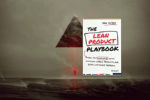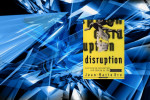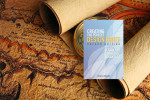Well Designed

Use empathy to discover valuable insights about your customers. Continually seek out signals from the market and synthesize your findings into a compelling design strategy.
Well-Designed: How to Use Empathy to Create Products People Love by Jon Kolko
Well-Designed asks: how are products which people love built? The answer: a design process built around empathy and anchored on emotional qualities. Jon Kolko, founder and director of the Austin Center for Design, emphasizes direct one-on-one interaction with and observation of customers as the foundation for building great products. Product managers must engage in genchi genbutsu: go look and go see. By interacting directly with customers, asking questions, and observing behaviors, a product manager will begin to synthesize market signals and form the concepts that will lead to new new products and services. Storytelling is a key skill because it begins to combine research observations with future state vision into building blocks of product value.
The book includes very specific methods and frameworks for behavioral research and presentation of data for maximum effect. Kolko discusses the process of creating key deliverables and the thought process behind effective discovery.
We are all becoming product managers, and our best process for success is a process of design–a creative process built on a platform of empathy.
Design for engagement
These products feel less like manufactured artifacts and more like good friends
Kolko sees design process as the middle ground between traditional requirements document driven and agile methods. In the former, he finds calcification and rigidity; in the latter, chaos and lack of direction. Rather than building even more features, Kolko seeks to provide “meaningful engagement” to people which is achieved by “designing products that seem as though they have a personality or even a soul.”
Design with empathy
think of design less as a way of making thing looks a certain way and more as a way of getting things done
The design process Kolko outlines in the book “is centered around empathy and is built on deep research with real people in their natural environments.” Empathy is what enables designers to create emotional engagement by developing an understanding of the people who will use their products and services.
The four elements of Kolko’s process are:
- Determining product-market fit by listening to signals from your customer community
- Identifying behavioral insights through ethnographic research
- Sketching a product strategy by distilling research data into actionable insights
- Finalizing and elaborating details of the product details with visual presentations
Kolko believes that empathy, the key to building meaningful products, can be learned and taught. Along the way, it is important to sift through qualitative research findings to achieve simplicity. Included in his process is a method for ideation which yields a product’s personality.
He focuses on the important question for product teams: “How does this particular decision positively affect the people who will use my product?”
Product management
Product management is about ensuring a good fit between a product, a person, and the market.
Products are not bundles of features. They are not defined purely by functional attributes. Products help people achieve emotional or practical goals.
Product-market fit takes into consideration competitors, pricing, marketing, technology, distribution, and maintenance. Understanding what consumers want is important, as is what the market will support. It is “contextual to geographic region, time, cost, and execution.” This is the macro view.
Product-person fit is dependent on product features, the emotions that are evoked by the experience of using the product, the product’s style, the ease of integration, and the ability of the person using the product to fulfill their emotional and functional goals. This is the micro view.
Design Thinking
Because designers conceive of what does not yet exist, their process cannot be analytically proven until after the fact. That means they must make intuitive or inferential leaps.
The four key themes of the book are: learning to build great products by developing empathy for your community of consumers, sifting through the mountains of research data to find the essence of your product, establishing the personality of your product through a well defined set of steps, and sketching a product concept map to help build excitement, alignment and engagement with your team, partners and stakeholders.
Design thinking can be thought of in opposition to an engineering mindset or a market focus. Marketing often focuses on competition while engineering frequently emphasizes an internal view of capabilities and functions. Design will bring a user centered focus to product development. A successful product strategy will blend all three viewpoints.
you must perceive technology as a means toward a larger end
Listening to Signals
To build great products, product managers must seek out and synthesize the many inputs and signals from their customers and the market. Constant contact with customers in their natural environments and asking questions from all angles will yield the raw data from which valuable insights can be derived. As each succeeding question is asked and answered, new questions emerge along with understanding. Gaining insights into the behavior of your customers serves as the foundation for the emotional connection your product can later create. Empathy is the link between a successful product manager and their community of customers. From these signals will emerge a pattern of problems the product can solve and valuable outcomes it can help achieve.
Creating a Design Strategy
if you don’t write it down, there’s little chance that anyone will remember it, believe in it, or act on it
Kolko suggests printing your design strategy on a floor-to-ceiling road map to signal your commitment and get people excited about your vision.
There are three artifacts which encompass a design strategy: an emotional value proposition, a concept map, and a product roadmap. These documents remind everyone why they’re doing what they’re doing, how all the pieces of the puzzle fit together, and what is the ultimate intent and outcome of the company’s activities.
The Emotional Value Proposition
A value proposition is a promise to your customer to produce value for them. To understand the nature of your value proposition, ask: “what can someone do after using or acquiring your product that she couldn’t do before using or acquiring your product?”
A key aspect of your design strategy is your product’s personality which, Kolko says “floats between brand and utility.” These traits will form the basis of the emotional content that will be elaborated later in the product design process.
A Product Concept Map
A product concept map is a tool for showing relationships between the conceptual sections of your product.
The map is a visual representation of nouns and verbs and “connects people or artifacts with processes or action.” To create the map, start by listing and grouping the nouns and verbs you use when talking about your product. Think about the outcomes that your product enables and prioritize the words accordingly.
Once the inventory is complete, start by arranging the noun-verb activity pairs in a timeline. For each pair identify the “hero flow” or primary objective. These “hero flows” will be the seed for storytelling about that aspect of the product. As you elaborate the flows, articulate the emotional qualities of the interactions and aspects of your product. These flows can then be sketched using wireframes or other representation to give life to your product’s key interactions.
The Product Roadmap
The product roadmap is where the process becomes tangible and tactical. Kolko suggests a three to six month view with key capabilities as the building blocks. Use your noun-verb pairs to start describing the end state of the product and the steps you’ll take to get there.
When thinking about execution, Kolko advocates “caring about tiny, tiny things”, keeping lists, creating good documentation, reading every support ticket, and celebrating victories.






